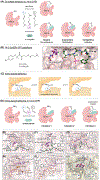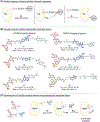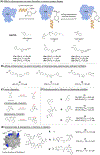Protein-protein interactions: developing small-molecule inhibitors/stabilizers through covalent strategies
- PMID: 37263826
- PMCID: PMC11003449
- DOI: 10.1016/j.tips.2023.04.007
Protein-protein interactions: developing small-molecule inhibitors/stabilizers through covalent strategies
Abstract
The development of small-molecule inhibitors or stabilizers of selected protein-protein interactions (PPIs) of interest holds considerable promise for the development of research tools as well as candidate therapeutics. In this context, the covalent modification of selected residues within the target protein has emerged as a promising mechanism of action to obtain small-molecule modulators of PPIs with appropriate selectivity and duration of action. Different covalent labeling strategies are now available that can potentially allow for a rational, ground-up discovery and optimization of ligands as PPI inhibitors or stabilizers. This review article provides a synopsis of recent developments and applications of such tactics, with a particular focus on site-directed fragment tethering and proximity-enabled approaches.
Keywords: covalent PROTAC; fragment-based drug discovery; imine; protein–protein interaction; targeted covalent ligand; tethering.
Copyright © 2023 The Author(s). Published by Elsevier Ltd.. All rights reserved.
Conflict of interest statement
Declaration of interests C.B. and K.R.F. are inventors in a patent application (#US Patent App. 17/611,036 pending to University of California and University of New Mexico) that covers HNA derivatives described in reference [25].
Figures






